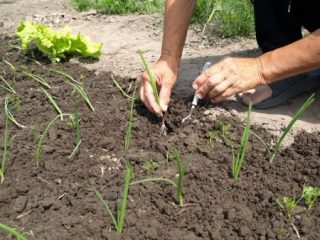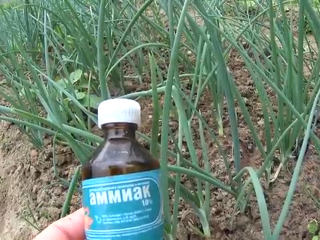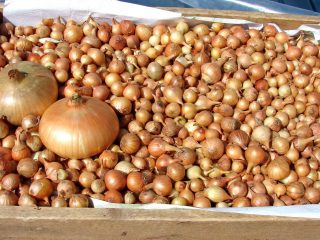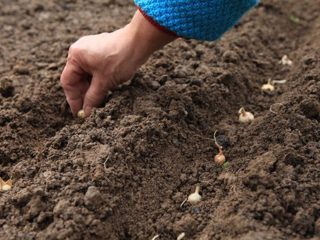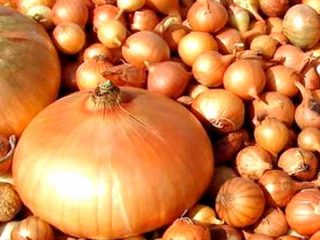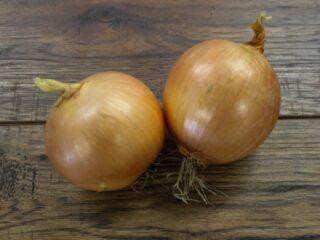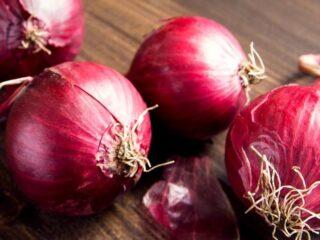Content
Danilovsky onion is a variety of Russian selection, obtained more than half a century ago. It is resistant to different climatic conditions, so it can be grown in most Russian regions. Productivity is low, but stable. The taste is semi-sharp, with a slight sweetness. This onion can be used in salads and other dishes. The long shelf life attracts both vegetable growers and buyers.
Origin story
Danilovsky 301 is a red onion variety developed back in the 1940s. on the basis of the Federal State Budgetary Institution "Federal Scientific Center for Vegetable Growing". The variety passed successful tests, and in 1950 it was included in the register of breeding achievements.
Danilovsky onion is approved for cultivation in the Volga region, the middle zone, as well as in the regions of the North-West. The variety is quite resistant to adverse weather conditions, so it can be grown everywhere, including in the Urals, Siberia and the Far East.
Description and characteristics of onion variety Danilovsky
Danilovsky onion is a rather unpretentious variety that tolerates short-term frosts and drought. It is characterized by moderate yield. One of the advantages is its juicy and tasty pulp.
Appearance
Bulbs of the Danilovsky variety are flat and round-flat in shape. The average weight is from 80 to 150 g. The top layer is represented by dry scales of dark red and purple colors. Juicy scales of soft lilac and light purple color. The variety is two- and three-germ, i.e. in one nest two, rarely three, bulbs grow.
Productivity
The yield of the variety is low - 1.2–2.3 kg per 1 m2. At the same time, root crops are shelf-stable and can be stored for several months (subject to normal conditions – temperature 2–5 degrees, darkness, moderate humidity). Danilovsky onion belongs to the mid-season (medium) varieties - it ripens in 3.5–4 months. During industrial cultivation, marketable yield ranges from 123 to 333 c/ha.
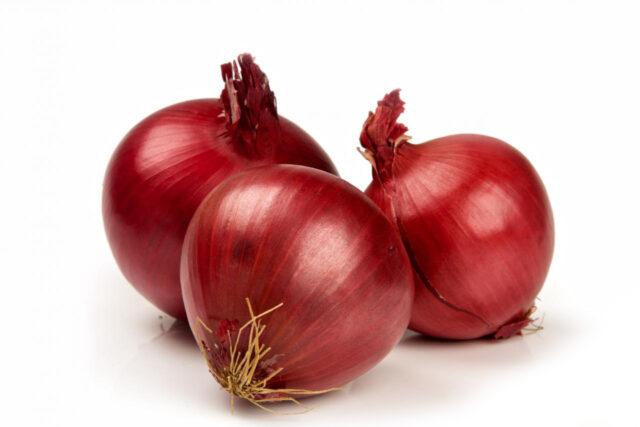
From 1 m² you can collect more than 2 kg of Danilovsky variety bulbs
Resistance to diseases and pests
The immunity of the Danilovsky onion variety to most diseases is quite good. But the plant may suffer from downy mildew (downy mildew) and onion fly. If the leaves begin to turn yellow and become covered with a gray coating, you should treat them with any fungicide as quickly as possible. Plantings are also periodically inspected for the presence of pests. If they are detected, the onions are sprayed with insecticides. In the early stages, it is advisable to use folk remedies.
Application
The taste of Danilovsky onion is semi-sharp, with a light, pleasant sweetness.Good for fresh consumption, including in salads and other vegetable appetizers. It is used for marinating and preparing various dishes - soups, meat, fish, vegetables. The variety is mainly intended for commercial production, although it can also be grown on private farms.
Advantages and disadvantages
Despite the low yield, summer residents appreciate the Danilovsky onion variety for its pleasant, moderately pungent taste. The culture is unpretentious and grows well in different soils.
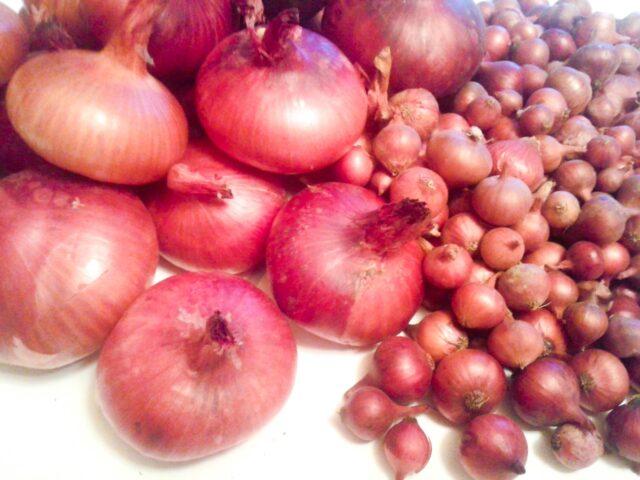
Root crops are shelf-stable, they can be transported to the place of sale or processing
Pros:
- salad taste;
- universal purpose;
- good keeping quality and transportability;
- low maintenance requirements;
- can be grown in most Russian regions.
Minuses:
- low yield;
- instability to downy mildew;
- susceptible to onion fly attack.
Growing onions Danilovsky
The Danilovsky variety can be grown in two ways:
- Annual crop from seeds (in regions with warm summers).
- Biennial onion sets (in cool conditions).
In the first case, ripening proceeds a little faster - the bulbs reach technical ripeness after 3.5 months. When grown from sets, the harvest can be harvested 2–3 weeks later, i.e. in 4 months.
How to grow from seeds
Since the crop ripens in 3.5–4 months, the seeds are sown both in open ground and for seedlings. In the first case, the period falls from the end of April to mid-May. If seedlings are grown, then it should be taken into account that Danilovsky onion seedlings are transferred to open ground 60 days after germination (in mid-May). Thus, it is worth planning sowing for seedlings no later than mid-March.
Regardless of the growing method, the seeds of the Danilovsky variety should be prepared.This is done in several stages:
- Soaking in a 2% solution of potassium permanganate for 30 minutes.
- Immersion in warm water for 6 hours. You can add a few drops of Zircon, Epin or another growth stimulant to it.
- After this, the seeds are allowed to lie on damp gauze in a saucer with a small amount of water at room temperature.
When planting onion seeds of the Danilovsky variety in the ground, mark several furrows at intervals of 10–15 cm, 2 cm deep. The grains are stirred one at a time at a distance of no more than 10 cm. This is quite enough for moderately dense planting.
When growing seedlings, Danilovsky onion seeds are sown in containers, cassettes or peat pots (2-3 per container) at the same depth. First, the containers are placed in a warm place (23–25 degrees) and covered with glass; after the shoots appear, they are removed and watered periodically. They are transferred to the ground after two months, while the ground must warm up to at least +10 °C.
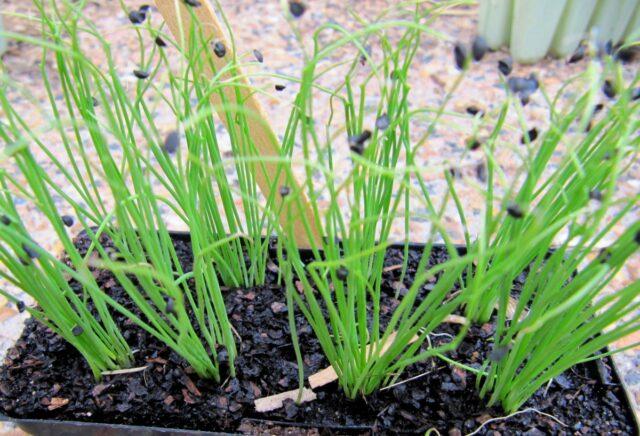
If the summer is short, it is better to grow onions as seedlings
A month before planting, dig up the soil in the garden bed and add 5 kg of humus or compost per 1 m2. If there is no organic matter, add complex fertilizer - 70-80 g for the same area. If the soil is clayey, you need to cover it with several large handfuls of sand or sawdust. The soil for seedlings needs to be disinfected in potassium permanganate or kept in the freezer for several days.
Planting sets
Danilovsky onion sets are planned to be planted in mid-May. It must first be selected. There should be no damage or rotten parts on the bulbs. After this, the seeds are heated for 6–7 hours at 45 °C. The planting pattern is exactly the same, but the interval between rows is 20–30 cm.
Features of care
Caring for Danilovsky onions is quite simple and includes several rules:
- During the first month, water weekly, then every 10 days. During drought, the volume of water is increased slightly.
- Danilovsky onions are fed three times per season. The first fertilizer is applied two weeks after mass germination, the second at the end of June, and the third seven days later. You can use complex mineral and organic fertilizers, watering is done at the root.
- Loosening, weeding - as needed.
- Mulching plantings with straw, sawdust, hay (a small layer is enough).
Diseases and pests of Danilovsky onion
Since the Danilovsky variety can suffer from downy mildew and onion fly, plantings must be periodically inspected. Fungal diseases are treated with fungicides (one to choose from):
- Bordeaux mixture;
- "HOM";
- "Fundazol";
- "Skor";
- "Ordan".
Effective insecticides are used to kill insects:
- "Fitoverm";
- "Aktara";
- "Vertimek";
- "Match";
- "Karate" and others.
If Danilovsky onion is grown for feathers, then it cannot be treated with insecticides and other preparations. In these cases, use an infusion of tobacco dust, garlic cloves, a decoction of potato or tomato tops, a solution of table salt, laundry soap and other folk remedies.

Onion fly can cause significant damage to onion crops
These additives will not only repel onion flies and other pests, but will also serve as an organic fertilizer.
Conclusion
Danilovsky onion has a pleasant taste, less pungent compared to traditional onion varieties. This is one of the rare varieties of red onions that can be grown even in Siberia. During care, special attention should be paid to watering and fertilizing. To combat insects, it is better to use folk remedies, then the greens can be used for food.
Reviews from gardeners about Danilovsky onions
